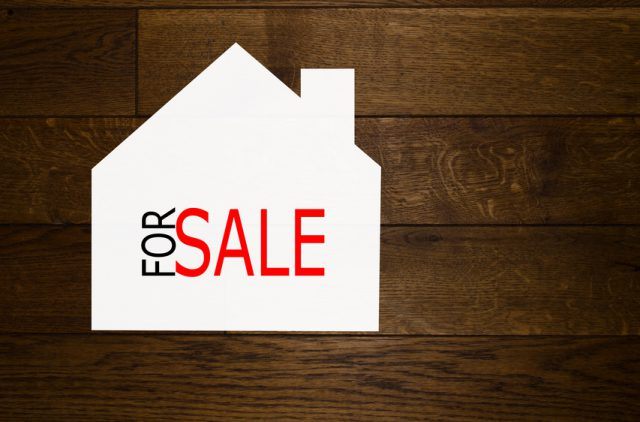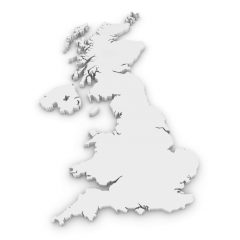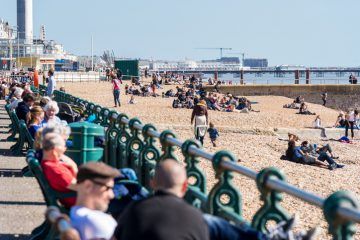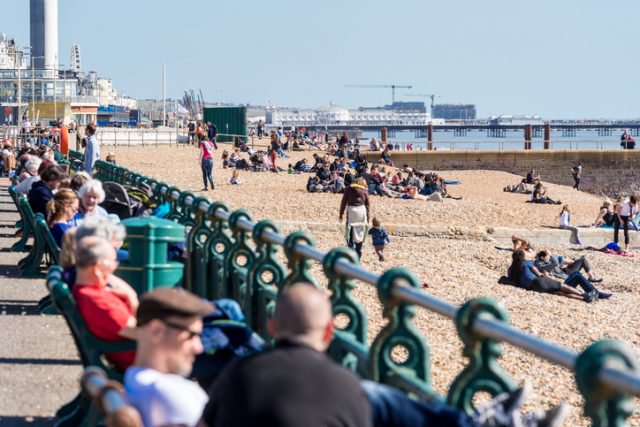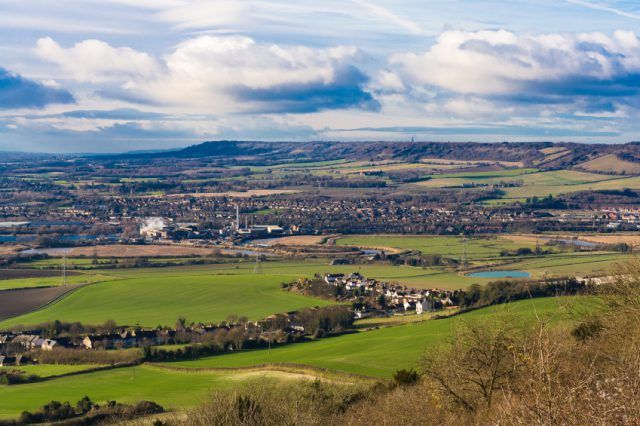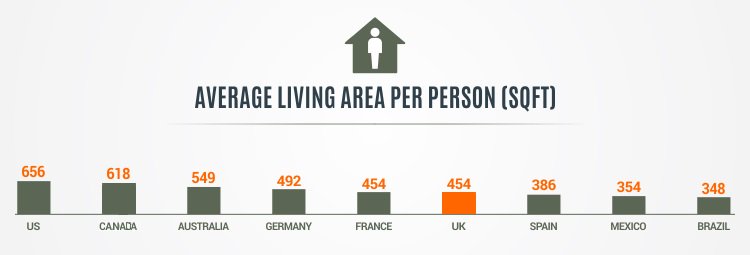Online estate agent eMoov.co.uk has released its National Hotspots Index for the first quarter (Q1) of 2017, looking at which areas of the UK have seen the largest and lowest spikes in property demand, as well as the greatest fluctuations on a quarterly basis.
The National Hotspots Index looks at the balance between supply and demand for housing stock in the UK’s 150 most populated towns and cities, giving each area a percentage score based on the level of stock available on the major property portals compared to that which has already sold.
Property demand across the UK stood at 33.80% in Q1 2017, having dropped by 17.56% since Q4 2016. The highest level of property demand in the UK was found in England, at 39.34%, with Scotland also higher than the UK average, at 36.18%. Meanwhile, Wales sat marginally below the UK average, at 27.35%.
The Founder and CEO of eMoov, Russell Quirk, comments on the National Hotspots Index: “A tough year for the UK market, due to a contribution
of Brexit uncertainty and a hike in second home Stamp Duty tax, has seen buyer demand fall off during the start of 2017. Despite this reduction, the market has continued to tick over, with prices – for the large part – continuing their upward trend.”
The highest levels of buyer demand across the UK’s 150 most populated towns and cities in Q1 2017 were found in Rugby, 68.29%, Portsmouth, 66.70%, and Bristol, 64.43%.
The City of Aberdeen, 14.11%, once again recorded the lowest levels of demand, with Hartlepool, 15.43%, and Middlesbrough, 19.15%, also seeing low levels of interest.
Stoke-on-Trent (+82.25%), Stockton-on-Tees (+77.75%) and Walsall (+65.09%) have all seen the largest increases in buyer demand in Q1.
However, the popularity seen last year across London’s commuter hubs seems to have subsided, as Guildford (-35.84%), Watford (-35.73%), Cambridge (-29.74%), Reading (-27.17%) and Brentwood (-26.93%) all experiencing the largest declines in property demand.
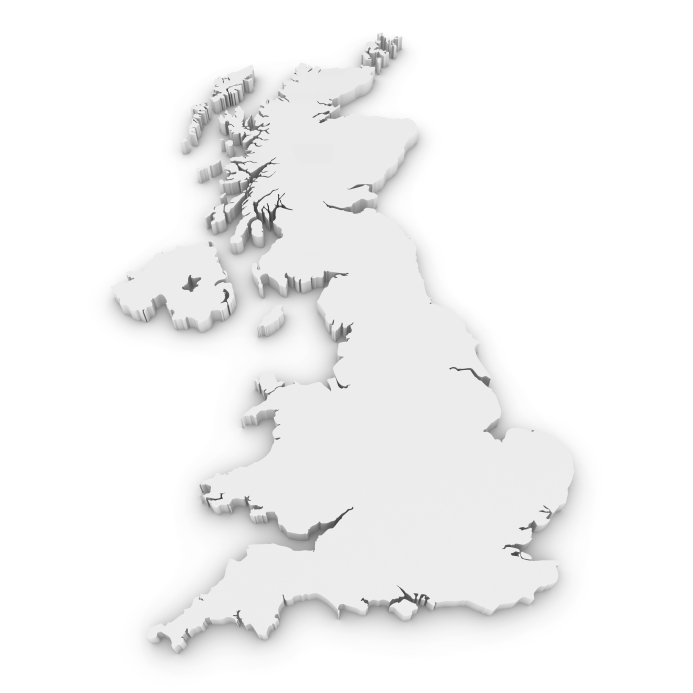
eMoov Releases National Hotspots Index for Q1 2017
Quirk says: “With many of the UK’s major cities becoming too expensive for homeowners in the region, and travel infrastructure improvements allowing us to live further away from work, it is no surprise that places such as Rugby and Portsmouth have grown in prominence amongst UK buyers. It isn’t just those in London that are looking outside of the larger city boundaries and opting for more affordable towns in the surrounding area.”
London
At 32.31%, buyer demand across the capital has been dampened, falling by 5% on Q4 2016. A tough year for London, coupled with continued levels of Brexit uncertainty, means that the capital places just 121st out of the 150 towns and cities for buyer demand.
Across London’s 32 boroughs, it is Bexley once again that retains the top spot as the hottest borough for buyer demand, at 56.13%. The borough has remained one of the strongest where interest from aspirational buyers is concerned, largely due to its peripheral location, more affordable house prices, and abundance of second and third rung property types.
The Olympic regeneration of Newham continues to draw buyers to the borough, with demand at 51.82%, while Havering is the third most in demand borough, at 50.51%.
Newham’s new found popularity is clear, as it is just one of two London boroughs to have not seen demand drop over the course of 2017. Since Q4 2016, the borough has seen buyer demand rise by a further 26.40%, joined by Harrow, where demand is up by 7.17%.
The worst decreases in the capital were in Greenwich (-60.83%), Lambeth (-57.62%) and Hounslow (-52.69%).
Prime central London
Nowhere in the capital was worse affected by the changes to second home Stamp Duty and the Brexit vote than London’s most prestigious boroughs.
Property demand in prime central London has been in decline for quite some time, as the market adjusts to the heightened level of price inflation recorded over the past few years.
The City of Westminster is home to the lowest level of buyer demand, at 10.14%, with Kensington and Chelsea, 11.49%, and Hammersmith & Fulham, 13.15%, also sitting in the table for lowest property demand.
Since the end of 2016, demand has dropped in all three of these boroughs, by 36.64%, 28.16% and 40.24% respectively.
Quirk explains: “London, as it usually does, will remain impervious to any lasting impact where the Brexit vote and further market uncertainty is concerned. There is an unquenchable thirst for London homeownership and the variety of property that the different boroughs offer, so it is likely the market will shrug off any trepidation seen at the start of this year.
“Prime central London, on the other hand, may see a price adjustment over the coming year, as buyer demand continues to stall and homeowners adjust the asking price of their property to account for the state of the current market.”
England
Across England, the hottest county for property demand in Q1 2017 was Northamptonshire, at 56.20%, closely followed by Bristol, 54.23%, and Suffolk, 52.25%. Despite Bristol’s continued popularity, demand has dropped by 12.93% during Q1, suggesting that prices have inflated as a result of strong buyer demand.
However, where demand growth is concerned, Northamptonshire tops the list, having seen an increase of 106.78% compared with the previous quarter. Shropshire (+46.14%), Tyne and Wear (+36.48%) and County Durham (+18.42%) have all also seen a strong uplift.
Despite the promising rise in demand, County Durham is still one of the coldest counties for buyer demand in England, at 22.75%, second only to the City of London, at 15.78%. The Isle of Wight, 24.77%, is ranked the third lowest.
Both Somerset (-2.72%) and Wiltshire (-7.00%) have recorded the largest declines of all counties in England.
Quirk continues: “Many areas of England have retained high levels of buyer demand over the start of 2017, with the London commuter hubs such as Bedfordshire and Essex benefitting from an overheated London market. Bristol has remained one of the hottest areas for property demand outside of London for quite some time now, but the Midlands and the East of England also seem to be growing in popularity, with the likes of Suffolk and Northamptonshire seeing a strong start to the year.”
Scotland
Across Scotland, the highest levels of buyer demand were found in South Ayrshire (67.18%), Edinburgh (56.47%) and Glasgow (56.42%).
Despite the country experiencing pockets of strong demand, Aberdeenshire (11.47%) and the City of Aberdeen (14.11%) continue to see buyer demand frozen.
The greatest growth in demand was in Highland (+66.59%), South Lanarkshire (+47.69%) and Fife (+40.47%).
Although demand is still low in Aberdeenshire, the area has seen an increase of 21.46% since Q4 2016. The largest declines in buyer demand were in Moray (-22.54%), Argyle and Bute (-14.20%) and Stirling (-6.33%).
Quirk responds to the data: “Scotland has had a turbulent time, due to the back-and-forth debate about its future as an independent nation. As a result, both buyer demand and property values have been unpredictable, to say the least, although the nation’s major cities seem to be holding their own.
“However, the plight of Aberdeen’s homeowners has been a result of the declining oil industry in the region, and the area has been one of the coldest in the UK for property demand for quite some time now.”
Wales
Wales has been arguably the worst hit market for buyer demand over the past year and, with the lowest average demand in the UK, the nation seems to still be recovering from the market slump.
The regions of Caerphilly (47.12%), Newport (46.92%) and Cardiff (42.89%) rank as the top three hottest areas for buyer demand.
But Cardiff’s popularity amongst Welsh buyers means that the capital has seen some of the lowest upward growth in demand, having risen by just 4.15% so far this year. Meanwhile, Rhondda Cynon Taf (+31.57%) and Swansea (+28.29%) have recorded the largest rises.
The Ceredigion (15.75%), Pembrokeshire (15.54%) and Denbighshire (13.36%) regions are home to the lowest demand in Wales, although it is important to note that there are areas across both London and Scotland with lower levels of buyer demand.
The greatest declines in Wales were in Bridgend (-13.47%), Monmouthshire (-9.63%) and Neath Port Talbot (-3.22%).
Qurik comments: “A particularly tough year for the market in Wales, due to the uncertainty surrounding the Tata steelworks and a declining economy.
“The nation is due to be worst hit by the Brexit process, so it would seem the dark clouds surrounding the Welsh property market will be staying put for the foreseeable future, despite promising signs in pockets at the start of this year.”
